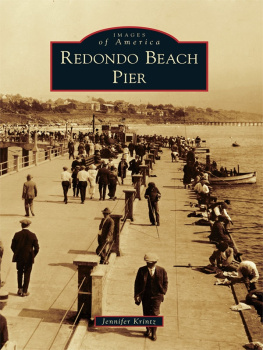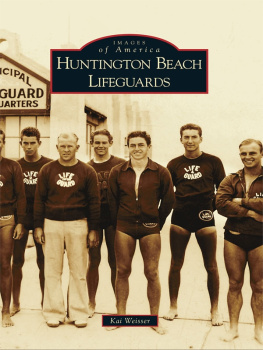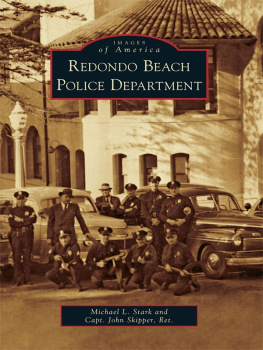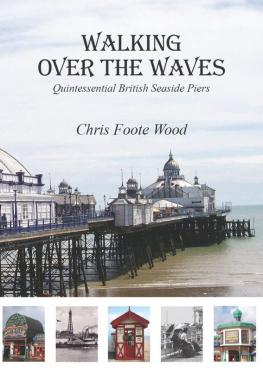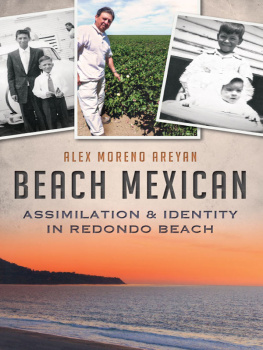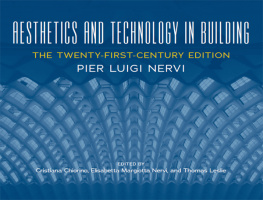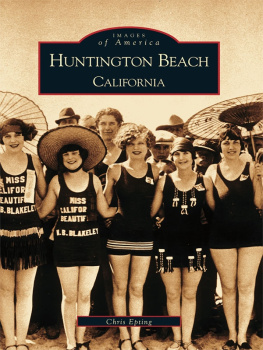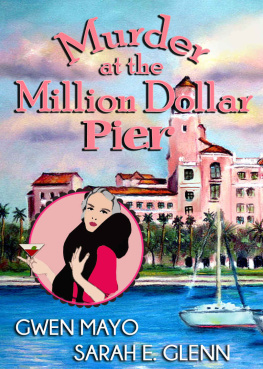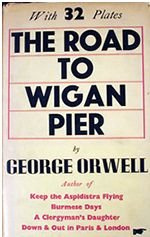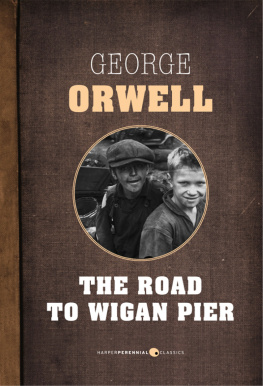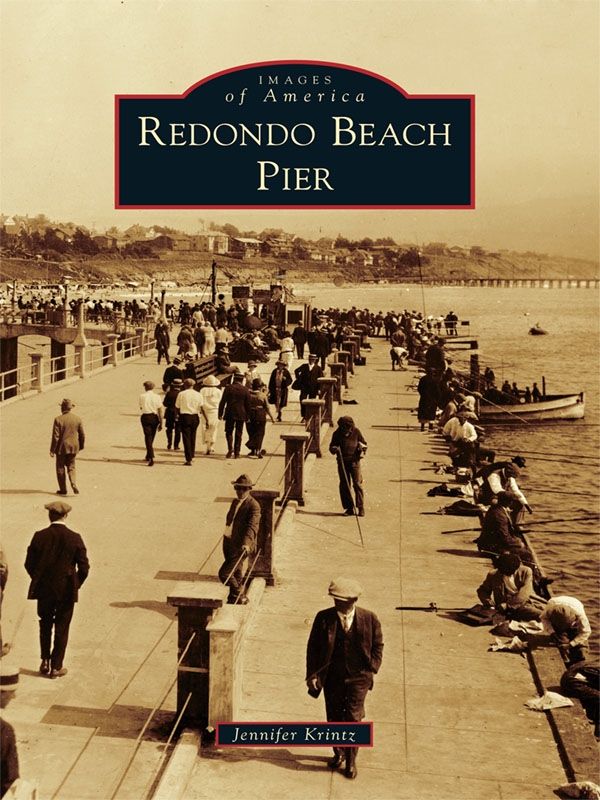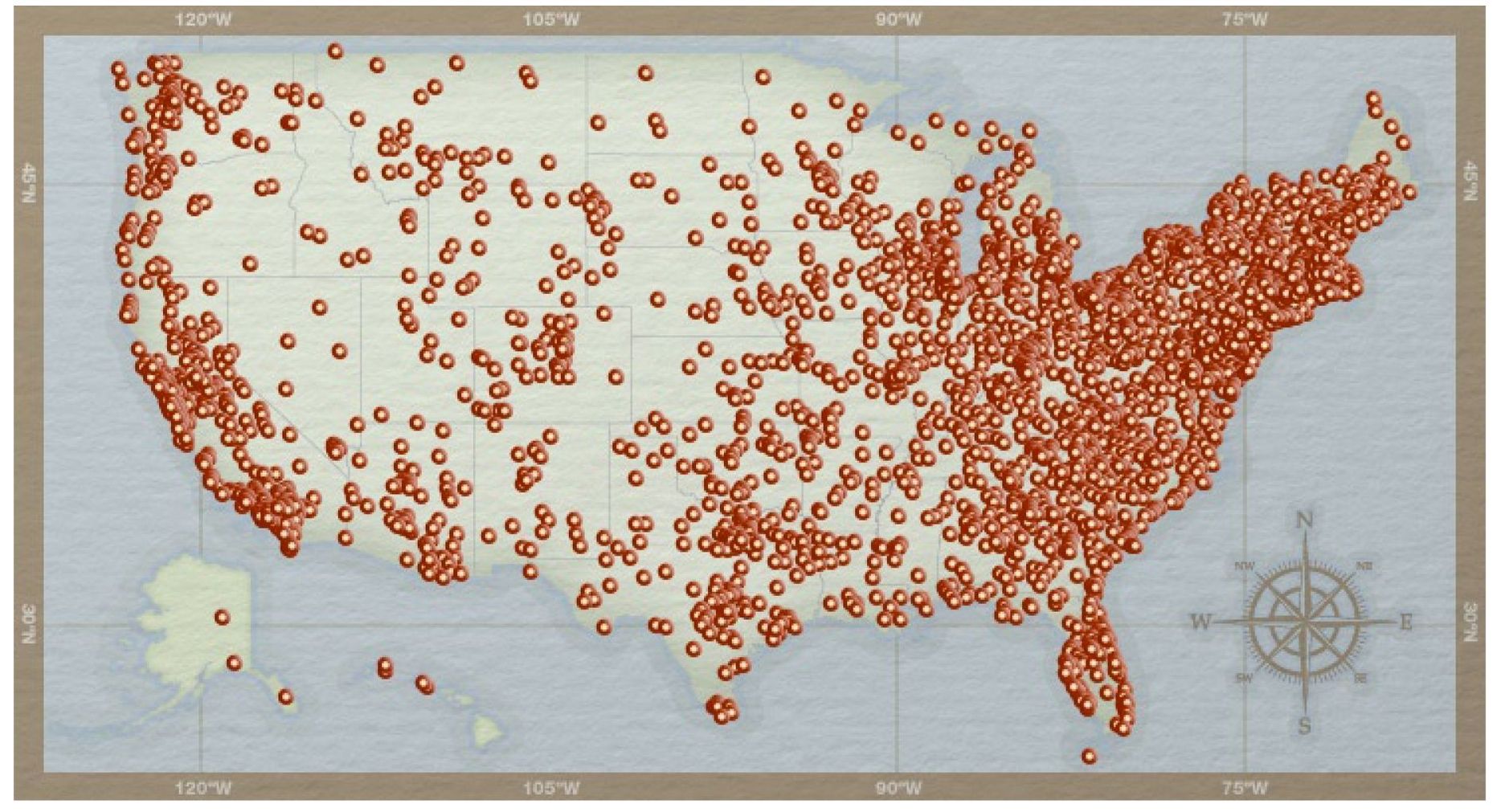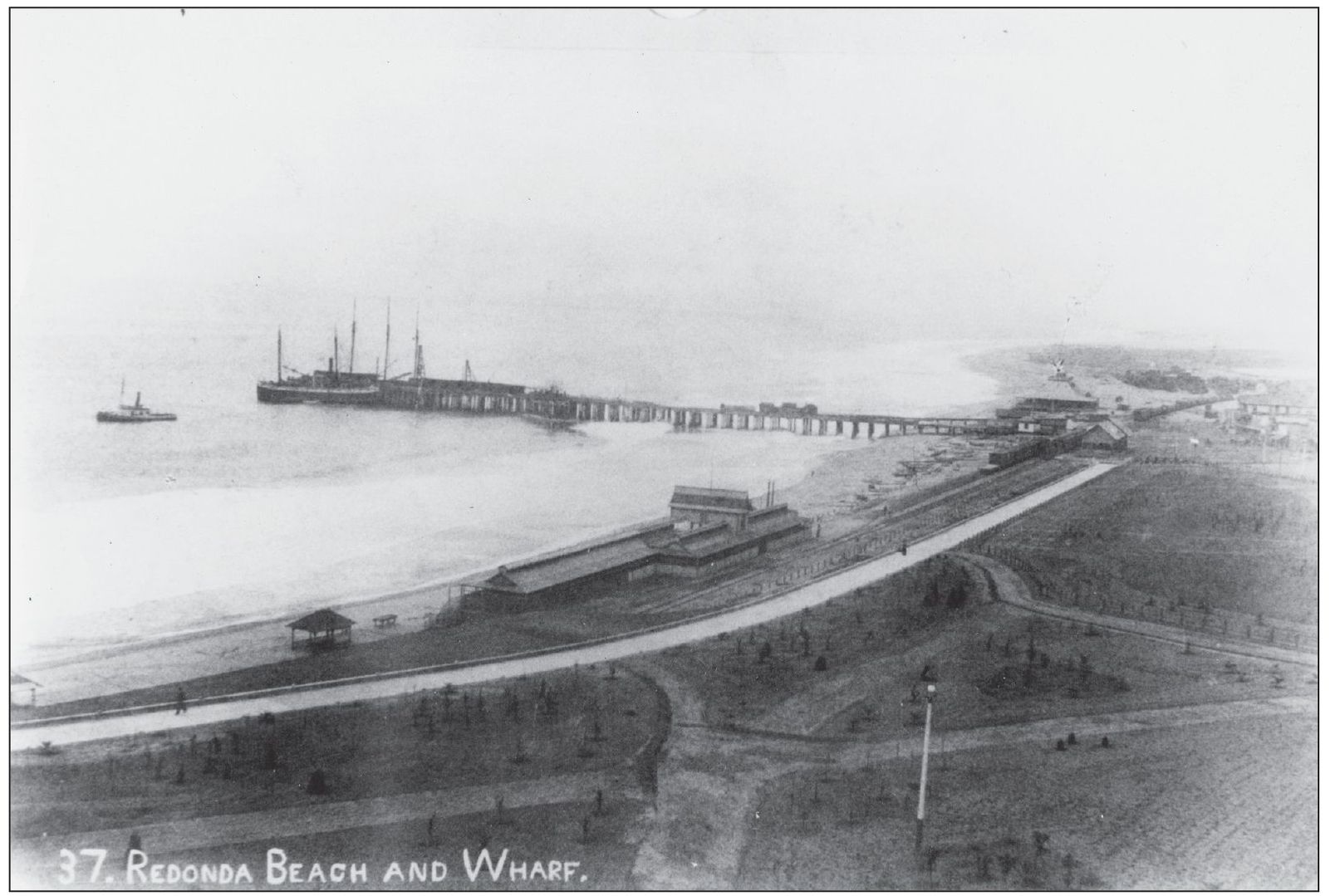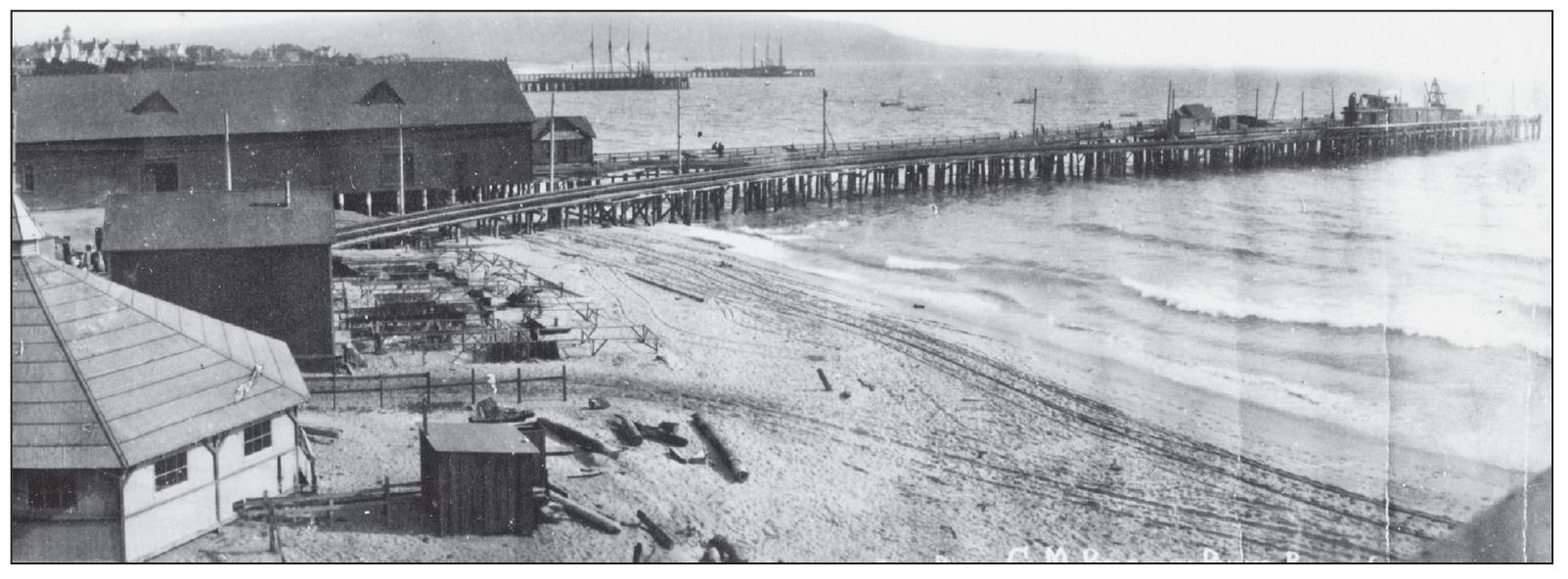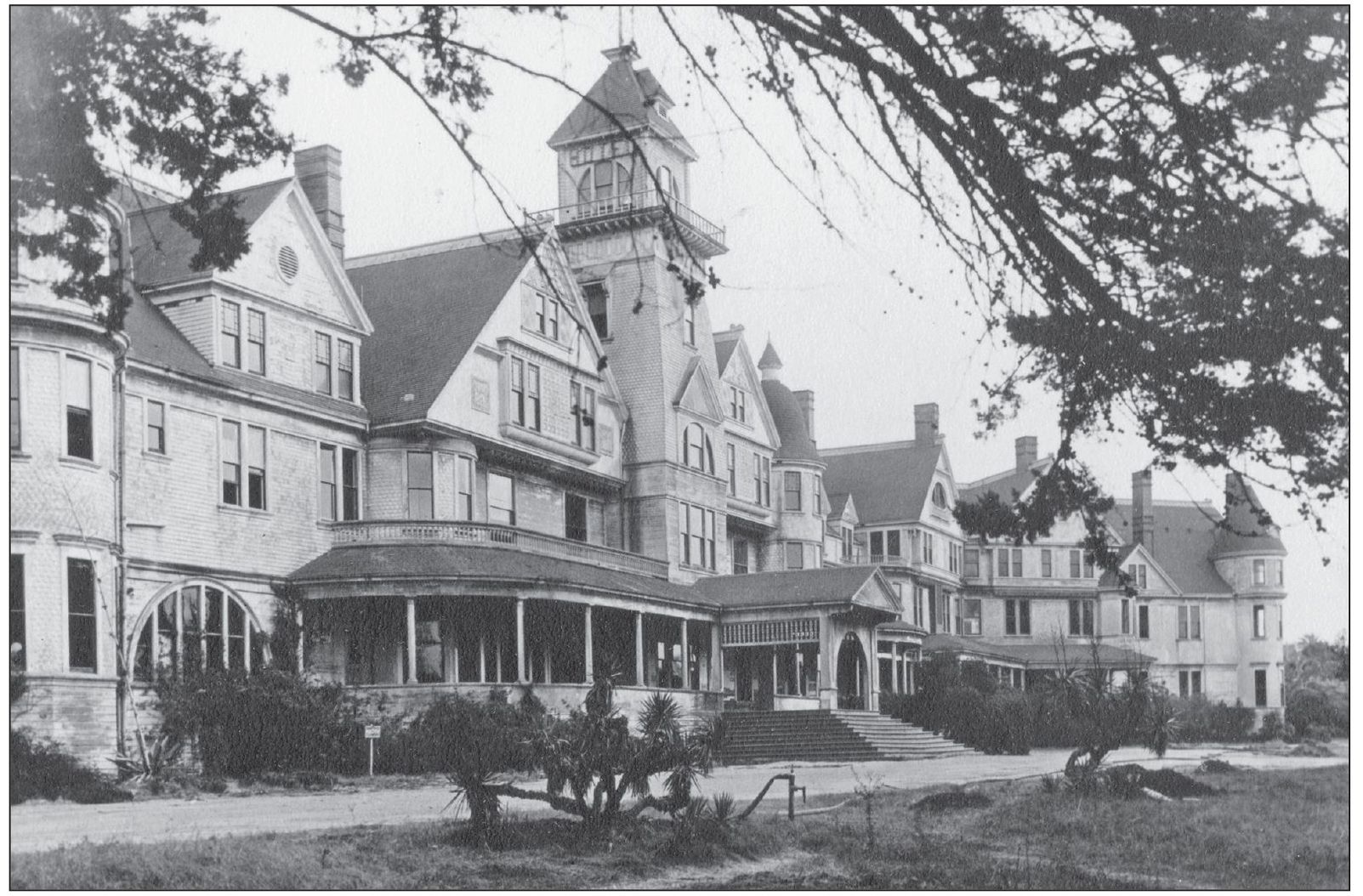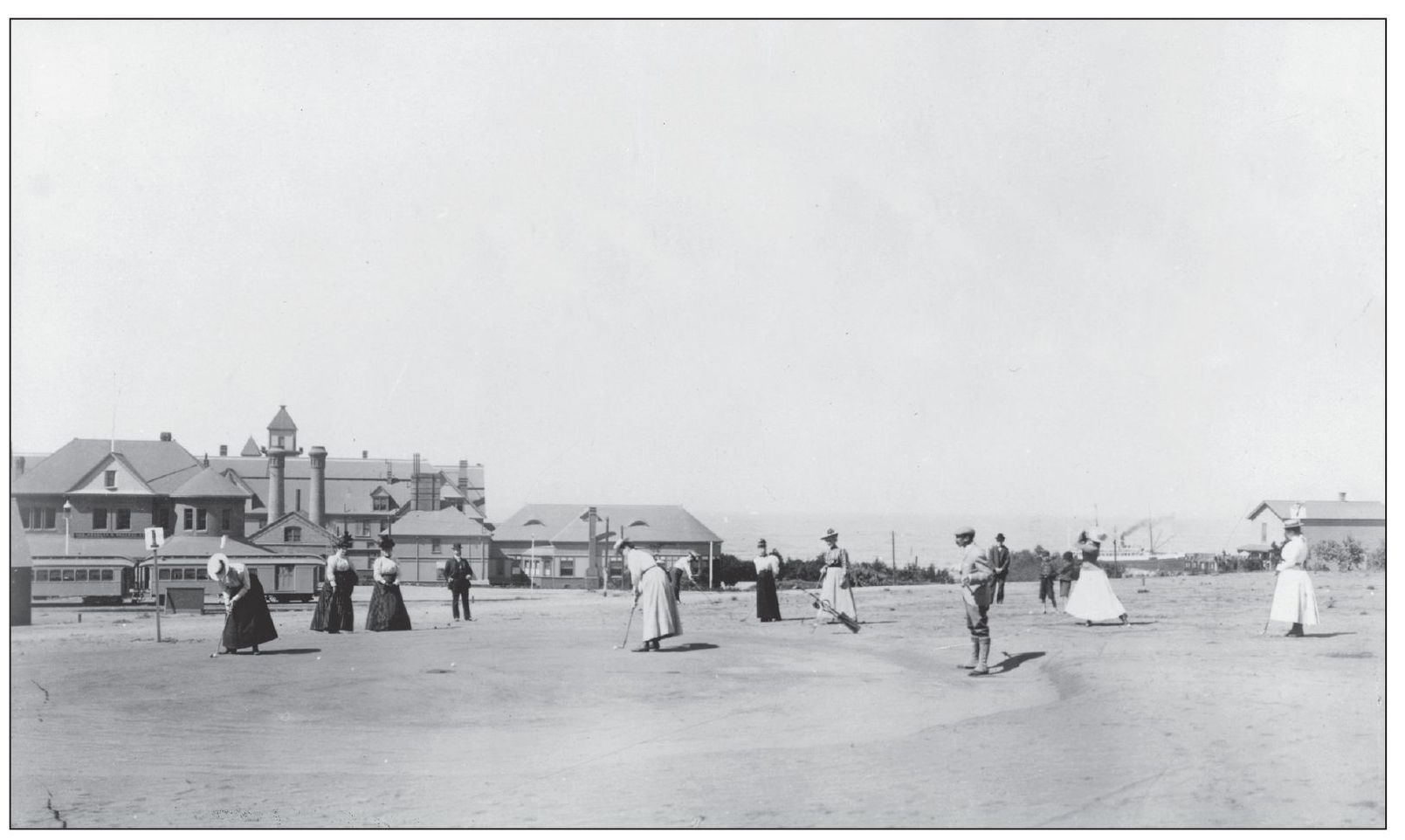I would like to thank the Redondo Beach Historical Museum for the use of its photographs and research. I would especially like to thank my father, Donald Krintz, who is the best research assistant ever. Thank you to Arcadia Publishing, in particular to Jerry Roberts and Debbie Seracini. I would also like to thank Linda Aust at the Redondo Beach Historical Society for her photographs. Thank you to the Historical Commission of Redondo Beach for its blessing of this book, and a very special thanks to Tike Karavas for all of his help, interest, and stories about Redondo in the old days. Id like to thank my friends who have been wondering where I have been. Last but not least, I would like to thank my family: Grandma, Pop, and Mama, for their encouragement and enthusiasm about this book, and my brothers and sisters, Jon, Amy, Jackie, Mitch, and little Joyce. Stephen, I would also like to thank you for your support, patience, encouragement, and love. I would encourage everyone, especially if you live in Redondo Beach, to visit the Redondo Beach Historical Museum and Morrell House at Heritage Court and to support local history. Unless otherwise noted, all images appear courtesy of the Redondo Beach Historical Museum.
BIBLIOGRAPHY
Exterior and Interior Views of Magnificent New Bathhouse and Plunge at Redondo Beach. Los Angeles Herald , July 4, 1909, p.12.
Historical Commission of Redondo Beach. Postcard History Series: Redondo Beach 18801930. San Francisco: Arcadia, 2005.
Johnson, Ken. Fun, Frustration and Fulfillment: An Historical Study of the City of Redondo Beach , 1965.
Krintz, Jennifer. Pleasure Piers & Promenades: The Architecture of Southern Californias Early Twentieth Century Beach Resorts . Athens: University of Georgia, 2009.
McCandless, Michael H. Well, at Least We Tried: The Seaport of Redondo Beach from 1888 to 1912 . San Diego.
Redondo Beach Opens Its New Pleasure Pier. Los Angeles Times , August 6, 1916, p. I11.
Redondo Beach Pier Wonder of Engineers. Los Angeles Times , October 11, 1915, p. I16.
Redondo Beach Season Opens with Dedication. Los Angeles Times , April 7, 1913, p I18.
Shanahan, Dennis. Old Redondo: A Pictorial History of Redondo Beach, CA . Redondo Beach: Legends Press, 1982.
Twenty Thousand Go To Redondo Beach. Los Angeles Times , June 23, 1913, p. I18.
Van Vleet, Miranda. The American State Fair: Architecture and Preservation . Athens: University of Georgia, July 2008.
Will Provide Amusements: Redondo Beach to Have Roller Coaster and Extensive Playground to Divert Its Visitors. Los Angeles Times , March 22, 1912, p. I14.
Find more books like this at
www.imagesofamerica.com
Search for your hometown history, your old
stomping grounds, and even your favorite sports team.
One
THE REDONDO BEACH WHARVES
In 1887, the Dominguez Estate Company sold more than 400 acres of beachfront land for $12,000 to the Redondo Beach Company, a group of real estate speculators. With the introduction of the railroad to the town in 1888, as well as the discovery of the deep submarine canyon off of the coastline that allowed large ocean liners to transport freight and passengers via the early wharves, the Redondo Beach Company set out to establish Redondo as a major shipping port for the city of Los Angeles.
Constructed from 1887 to 1904, three wharves jutted out from the Redondo Beach shoreline at the base of Emerald Street, Sapphire Street, and Ainsworth Court. By the end of the 19th century, industrialization made way for the United States to become a major player in foreign commerce and trade. Shipping ports became integral for transporting freight and passengers. Above are the three wharves of Redondo Beach. From left to right are Wharf No. 3, constructed in 1904 at the end of Sapphire Street; Wharf No. 2, constructed in 1895 at the end of what was once Ainsworth Court in front of Hotel Redondo; and Wharf No. 1, constructed in 1888 at the end of Emerald Street. Below is Wharf No. 1 shortly after construction in 1889.

Above is a photograph taken in the early 1900s from the north, facing south. In the background is the Palos Verdes Peninsula. The photograph below faces north toward the three wharves from the south. These three wharves helped make Redondo Beach one of the contenders for the Los Angeles Harbor in the late 1800s. Other possibilities included Santa Monicas Long Wharf to the north and San Pedro to the south. San Pedro eventually won the battle of the ports, but Redondo Beach stayed in the shipping industry until San Pedro took the last of Redondos business shortly after 1912.

As part of the shipping industry, tourist and passenger traffic passed through the small town of Redondo Beach in the late 19th century. To lure these passengers to stay and enjoy the seaside, the Redondo Beach Company constructed the Hotel Redondo in 1890. It was a beautiful hotel built along the bluffs, overlooking the wharves and the Pacific Ocean. This hotel was one of the most extraordinary of its time. Erected at the same time as the Hotel Del Coronado in San Diego, Hotel Redondo boasted 225 rooms, baths on every floor, a golf course, tennis courts, and a grand ballroom.
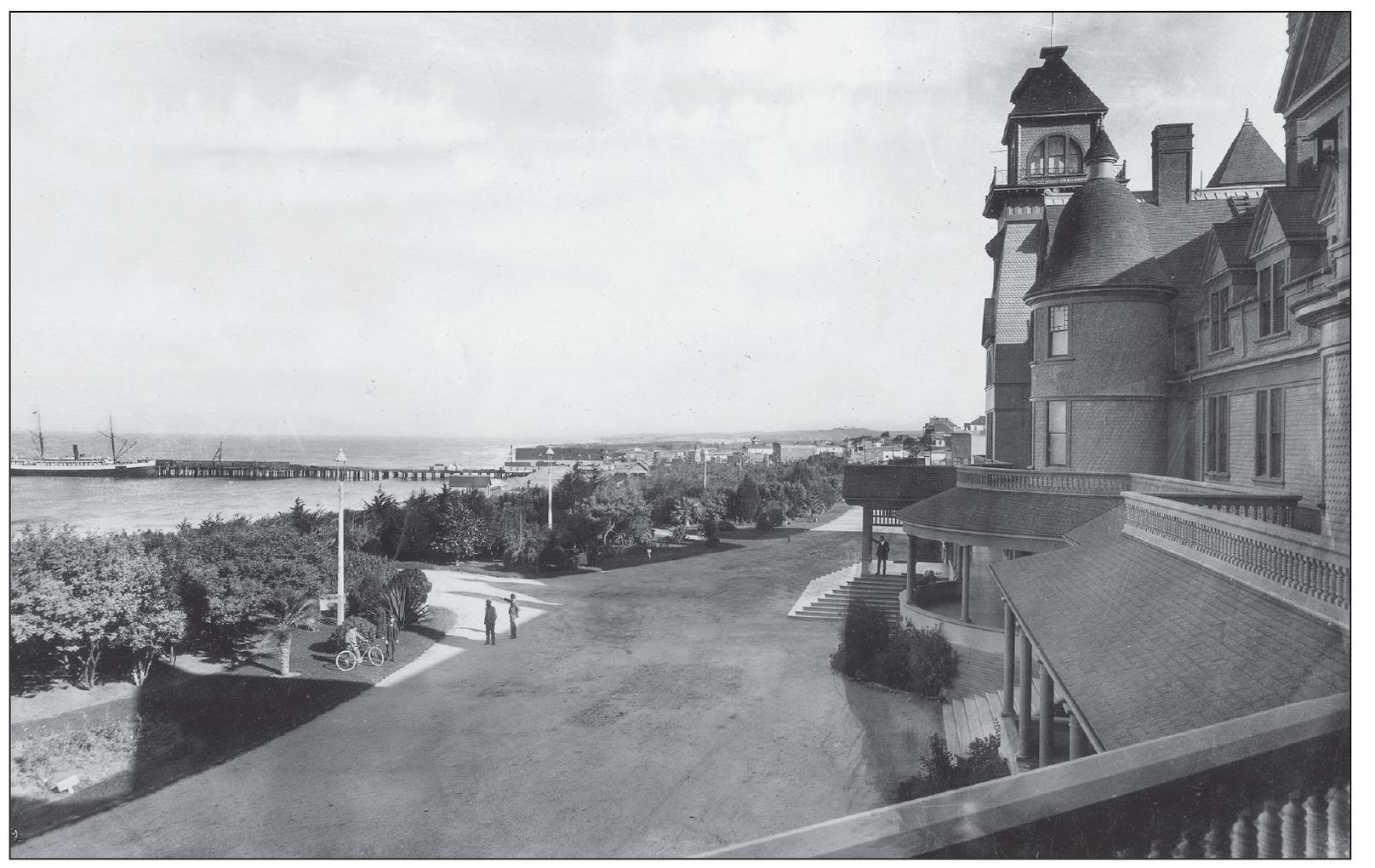
Shown here is Hotel Redondo in the late 1890s. The hotel was constructed in a High Victorian style on a towering bluff overlooking the Pacific Ocean. It was a three-story hotel that had a complex multi-gable roof adorned with several dormer windows and turrets. The photograph above captures the beautiful landscaping in front of the hotel that led to the beach. In the image below, people enjoy a round on the golf course adjacent to the hotel.

